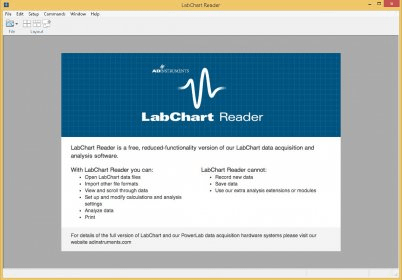
This window is also where you should choose " Single-ended" (ie, one signal wire vs. Select an appropriate voltage range from the drop-down menu to enlarge or reduce the vertical amplitude of the signal so it fits in the display box. The Input Amplifier window will show you the raw data coming in on that channel. This is the easiest way to set the vertical scale (the "Range"), but it can be done only after you have neural activity to examine. Activate the Input Amplifier dialog box, shown below, by double-clicking on the "Input Settings" column for each channel that receives raw data (you must set each one separately). These settings will help eliminate slow baseline drift.ĥ. Select the source, filter type, and cut-off frequency as shown to remove low-frequency components of Channel 1's signal. This example shows Digital Filtering, which brings up the dialog box shown at the right. Select a calculation from the drop-down menu (last column) for any channels that will display raw input data (this can also be done later). Check "Same Sampling Rate on All Channels" (bottom right) to make the sampling rate apply to all the channels.Ĥ. This will give very good images of individual spikes when you stretch the time scale to see them.ģ. "40K" means that 40,000 samples will be taken every second, or 40 every millisecond. 40K is a good choice, and 20K will be satisfactory if you are concerned about the length of files. From the drop-down menu (second column), select the sampling rate, the number of points per second that will be digitized for each channel. Click the "On" box in the first column to turn on Channel 1. You can add or remove channels later by revisiting the Channel Settings dialog in the Setup menu.Ģ. Set up three channels now (the figure shows four) using the box at the bottom. Usually this will be 1 or 2 input channels for raw data, and additional calculation channels for each input channel. First, set the number of channels you wish to make active. The figure below shows the main chart window after data has been recorded, analyzed, and saved as a file named "SPIKE demo."Ĭhart's menubar (above) offers many functions, some of which are also accessible from the toolbar (below).īefore you begin recording, you must set certain parameters in the Channel Settings dialog box, which you should activate now from the Setup Menu.ġ.

A new chart window will appear in which data will be displayed when you record it.
#Filter in labchart reader software#
The software will check to see if the PowerLab input box is connected and powered up, and it will warn you if it isn't. Launch LabChart by clicking on its icon in the dock.
#Filter in labchart reader pdf#
Analyze bursts with Chart's Integral functionĮxtensive instructions from the manufacturer are available as PDF files in the LabChart 7 folder, which is in the Applications folder on your computer's hard drive. Analyze action potential firing rates with Chart's Spike Histogram module.ģ. This online guide to PowerLab hardware and LabChart software will help you: 1. Biological Sciences 330, Smith College | Research in Cellular Neurophysiology Appendix: Capturing Data with PowerLab and LabChart


 0 kommentar(er)
0 kommentar(er)
